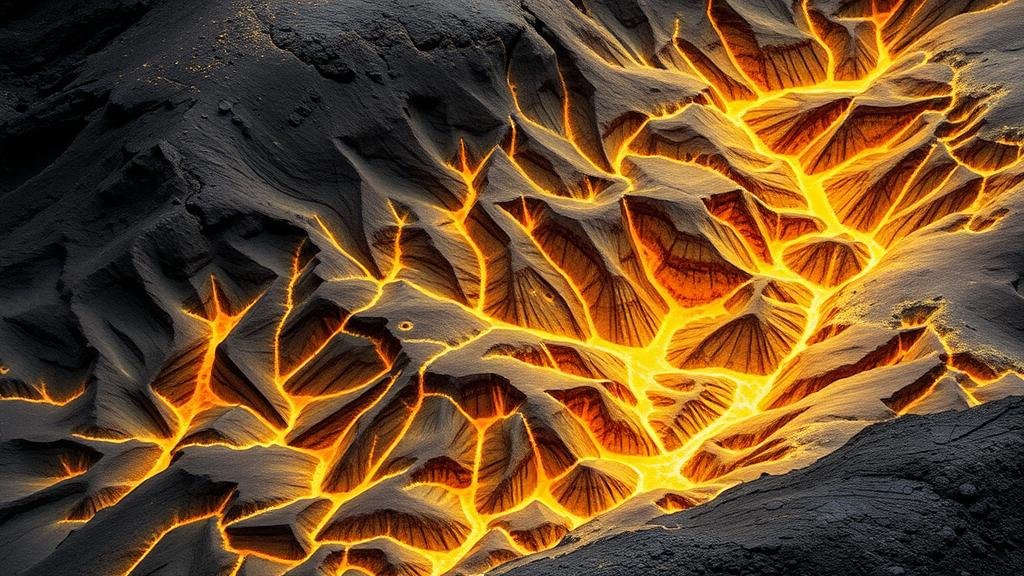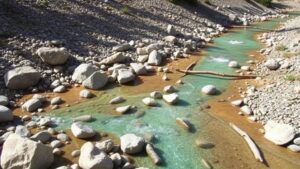Techniques for Identifying High-Grade Epithermal Gold Systems in Volcanic Terrains
Techniques for Identifying High-Grade Epithermal Gold Systems in Volcanic Terrains
Identifying high-grade epithermal gold systems in volcanic terrains is a crucial endeavor in mineral exploration. Such geologic settings offer unique opportunities for discovering economically viable gold deposits, primarily due to specific characteristics of volcanic activity and mineralization processes. This article outlines various techniques used to identify these systems, incorporating geological, geochemical, and geophysical methods.
Understanding Epithermal Gold Deposits
Epithermal gold deposits are formed from fluids that rise from magma sources and crystallize at relatively shallow depths. e deposits are characterized by their association with volcanic activity and typically exhibit two types: low-sulfidation and high-sulfidation. Low-sulfidation deposits often contain native gold and occur in contexts rich in vesicular rocks, while high-sulfidation deposits are usually associated with acid-sulfate alteration and exhibit complex ore mineralization.
Geological Mapping
Geological mapping is the foundation of identifying potential gold systems in volcanic terrains. Mapping involves analyzing the surface geology, including the distribution of rock types, alteration features, and structural geology.
- Examine lithological units such as volcanic tuffs and lavas for signs of hydrothermal alteration.
- Map structural features like faults and fractures, which can act as conduits for mineralizing fluids.
An example of successful geological mapping can be seen in the exploration of the Cerro Negro mine in Argentina, where detailed mapping revealed a complex interplay of volcanic and intrusive rock types that were crucial for identifying high-grade mineralization.
Geochemical Analysis
Geochemical analysis is instrumental in locating epithermal mineralization. This process involves collecting soil, rock, and stream sediment samples to assess the concentration of pathfinder elements that indicate gold mineralization.
- Key pathfinder elements include arsenic, antimony, mercury, and tellurium.
- Utilization of methods such as inductively coupled plasma mass spectrometry (ICP-MS) can enhance the detection of these elements at trace levels.
The success of geochemical surveys is underscored by the case of the Porgera Gold Mine in Papua New Guinea, where geochemical anomalies led to the discovery of substantial epithermal gold systems.
Geophysical Techniques
Geophysical methods provide indirect indications of mineral deposits and are particularly useful in volcanic terrains where surface expressions may be concealed. Several techniques can be applied:
- Magnetic Surveys: Used to detect intrusions associated with epithermal systems.
- Induced Polarization (IP): Helps in identifying disseminated sulfides often found in gold deposits.
- Resistivity Studies: Aid in mapping the geometry of ore deposits through differences in electrical properties.
A practical application of geophysical methods was conducted at the Gold Fields St Ives operations in Australia, where integrated geophysical surveys aided in delineating key drill targets, significantly enhancing exploration success rates.
Remote Sensing and 3D Modeling
Remote sensing technologies have become advantageous in large-scale exploration efforts. Satellite imagery and aerial surveys can identify alteration patterns and thermal anomalies indicative of hydrothermal systems.
- Hyperspectral Imaging: Can detect mineral alteration products associated with gold mineralization.
- Digital Terrain Models (DTMs): Help 3D visualization of terrain, aiding in structural analysis.
The use of remote sensing has been notably effective in projects like the Alturas Project in Peru, where hyperspectral imaging identified significant alteration zones that pointed to potential high-grade deposits.
Integration of Techniques
The integration of geological, geochemical, geophysical, and remote sensing data leads to a more robust understanding of epithermal gold systems. This multi-faceted approach allows for identifying high-prospect areas and making informed decisions regarding further exploration.
For example, the combination of geochemical assays indicating elevated arsenic and IP anomalies can provide compelling evidence for a prospective drilling target, thereby maximizing the efficiency of mineral exploration efforts.
Conclusion and Actionable Takeaways
Identifying high-grade epithermal gold systems in volcanic terrains involves a diverse set of techniques that, when applied systematically, enhance the potential for discovery. By understanding and implementing geological mapping, geochemical analysis, geophysical techniques, and remote sensing methods, exploration teams can increase their chances of locating economically viable gold deposits.
- Use a comprehensive mapping strategy that includes structural and lithological analysis.
- Use cutting-edge geochemical techniques to identify key pathfinders.
- Incorporate geophysical methods for a holistic assessment of mineral potential.
- Employ remote sensing technologies to support exploration initiatives.
To wrap up, the meticulous application of these techniques will lead to more efficient exploration strategies and ultimately contribute to the success of mining operations within volcanic terrains.


